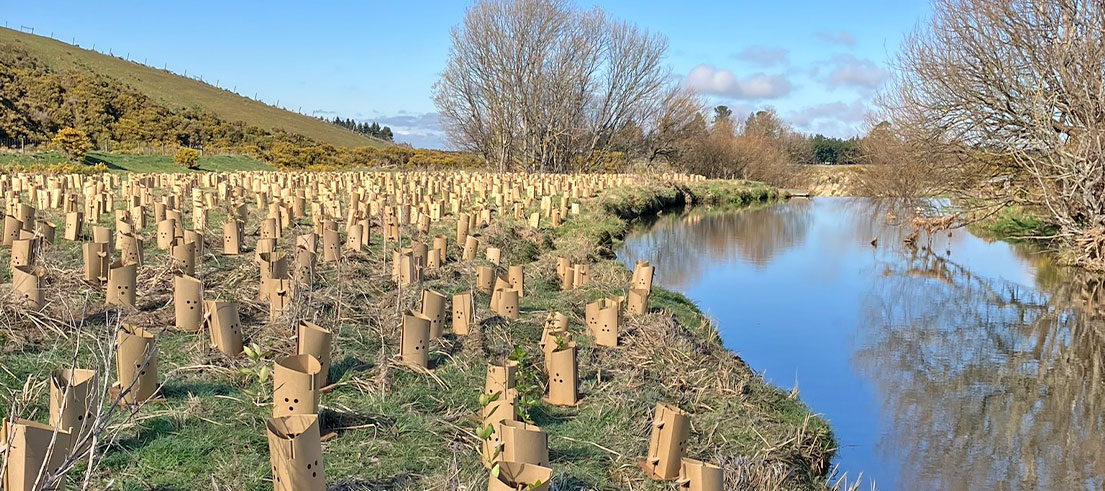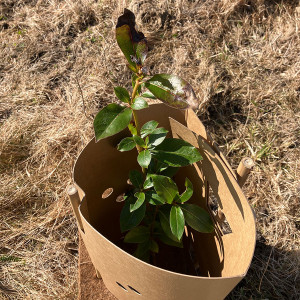
Hekeao Hinds River restoration
Just one conversation about what an Environment Canterbury restoration project was hoping to achieve was all it took for one landowner couple to voluntarily retire four hectares of productive farmland.

2450 native plants planted
It was more than Braided River Revival Regional Lead, Greg Stanley, could have hoped for.
“They decided that they were going to fence off all the river line sections. They just did it! They just took four hectares out of production, fenced it off and said ‘we want to plant this’,” Greg enthused, “there’s lots of really good habitat there and they’ve retired it.”
The Hekeao Hinds River and Limestone Creek site is one of two locations, totalling 25 hectares along the Hekeao that will benefit from over $150,000 in funding for targeted weed control and planting of 5750 native plants. The Limestone Creek site covers 18 hectares, with 2450 native plants in the ground.
The berm transition project
As part of this project, we are transforming sites on 23 rivers throughout Waitaha Canterbury through targeted weeding and enhancement planting.
Targeted weeding means leaving flood protection trees and native flora untouched while eliminating pest plants like cotoneaster, hawthorn, and barberry.
Benefits of this work include increasing habitat for manu and lizards, decreasing flood risk by supporting our flood protection trees, and increasing seed source to re-establish native plant growth.
The Regionwide Berm Transition Project is part-funded by the Ministry of Business, Innovation and Employment’s Kānoa – Regional Economic Development and Investment Unit (64%), with the remainder co-funded by us through a combination of contributions from partners and operational funding/rates.
Maintaining the river
The Limestone Creek site is not part of the Hekeao Hinds River Rating District which means most of the works done in that area were paid for by the landowner.
“The Environment Canterbury rivers guys come up and do a bit of ad hoc weed control work. Participating in weed control through this project is good for everyone; if we pull it all out up here, maintaining the river capacity, then we’re gaining a bit of control further downstream,” Greg said.
So far contractor, Recreational Services, has completed clearing the site, weed control operations and native planting.
The owners’ decision to bring the fence line back from the river will have the added benefit of reducing incidental stock access to the waterway when out of river flooding occurs.
Enhancing biodiversity values
The Limestone Creek site is teeming with “lots of little wetlands,” the kind that attracts rare and elusive manu. Greg was chuffed to see some kotoreke (Baillon’s crake, marsh crake) and was treated to a frill-neck display by a grumpy matuku-hūrepo (Australasian bittern).
“Both of these birds are an exceptionally good sign of a healthy waterway and reinforce the value of doing a large riparian enhancement project.
“It’s also full of mixed native vegetation on the berms including kowhai and miki. The berm is foothills on a very steep gradient and quite dry, so this project is less about vine weeds like old man’s beard and more about targeting the foothill weeds,” Greg explained.
